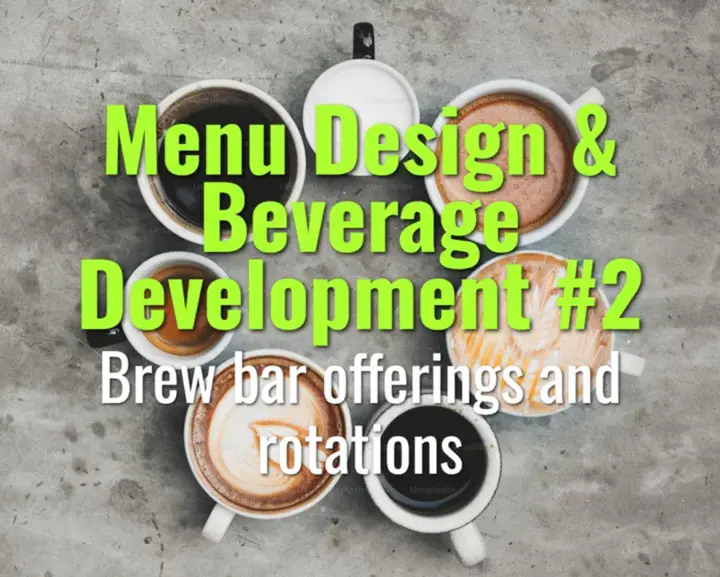Brew bar offerings and rotations
How to design and rotate brew bar offerings—manual filter methods and single-origin features—while keeping the menu dynamic and customer-focused.
- Coffee Basics Nerds
- 2 min read
Article 2 of 12 in Menu Design & Beverage Development/

Purpose of a Brew Bar
- Highlights manual brewing methods (V60, Chemex, Kalita, AeroPress, siphon).
- Showcases single-origin coffees with distinct terroir.
- Creates educational, interactive experiences for customers.
Core Offerings
- Pour-Over (V60/Kalita): Clean, transparent, emphasizes origin character.
- Chemex: Larger brews, clarity with softer body.
- AeroPress: Versatile, allows barista creativity.
- Siphon/Vacuum Pot: Theatrical, tea-like clarity.
- Batch Brewer (SCA standard): Consistent filter coffee option.
Rotation Strategies
- Single-Origin Rotations: Rotate every 2–4 weeks to keep menu fresh.
- Seasonal Features: Align offerings with harvest cycles (e.g., fresh-crop Ethiopia in summer, Central America in winter).
- Roast Style Variations: Offer both lighter and medium roasts to cater to different palates.
- Experimental Lots: Include anaerobic or honey-processed coffees for adventurous customers.
Communication
- Provide clear tasting notes, farm/producer info, and brew recommendations.
- Use menu boards, cards, or QR codes for transparency and storytelling.
Operational Considerations
- Limit active choices (2–3 at a time) to reduce confusion and training complexity.
- Track sales data to guide which origins or brew methods to keep.
- Train staff to guide customers toward suitable choices.
Customer Experience
- Brew bar creates engagement—customers see coffee brewed to order.
- Enhances perception of quality and specialty focus.
- Encourages repeat visits as menu changes.
Summary
A well-curated brew bar rotates single origins, methods, and roast styles to showcase coffee diversity. Strategic rotations, clear communication, and interactive brewing create a dynamic experience that highlights specialty coffee while remaining approachable and profitable.
You might also like:
- Tags:
- Specialty Coffee
- Train Staff
- Filter Coffee
- Customer Experience
- Brewing Methods
- Central America
- Single Origin
- Qr Codes
- Medium Roasts
- Brew Methods
- Roast Style
- Origin Character
- Operational Considerations
- Quality Specialty
- Manual Brewing
- Coffee Brewed
- Processed Coffees
- Transparency Storytelling
- Tasting Notes
- Single Origins